Gross domestic product grew by 1.6 per cent in 2016
The volume of gross domestic product grew by 1.6 per cent last year. Calculated at current prices, gross domestic product was 2.4 per cent higher than in 2015.
Gross domestic product remained on level with the previous quarter in October to December. Compared with the fourth quarter of 2015, GDP increased by 1.3 per cent. According to preliminary data compiled by Eurostat, GDP in the EU-28 area grew by 0.5 per cent in the fourth quarter of 2016 compared with the previous quarter and by 1.8 per cent compared with one year back.
Figure 1. Volume change of GDP from the previous quarter, seasonally adjusted, per cent
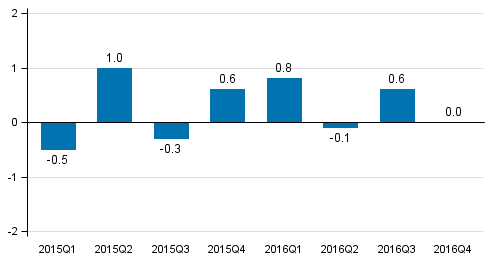
Finland's national economy continued to grow in 2016. The growth in GDP was biggest in the first and third quarters, when GDP grew by 0.8 and 0.6 per cent from the previous quarter, in the other quarters, the change was close to zero. Employment improved during the year.
In 2016, GDP increased as a result of growing consumption and investments. Among industries, construction and business activities in particular grew strongly.
Production
In the fourth quarter, the combined volume of value added in the national economy grew by 0.1 per cent from the previous quarter. In the whole of 2016, value added generated was 1.3 per cent higher than in 2014.
Examined in euros, value added grew in construction, particularly in building construction, and in private services. Viewed by current prices, clear growth in 2016 was seen among manufacturing industries in mining and quarrying, the forest and chemical industries, and energy supply, water supply and waste management.
Figure 2. Changes in the volume of value added generated by industries in 2016 compared to one year ago, per cent
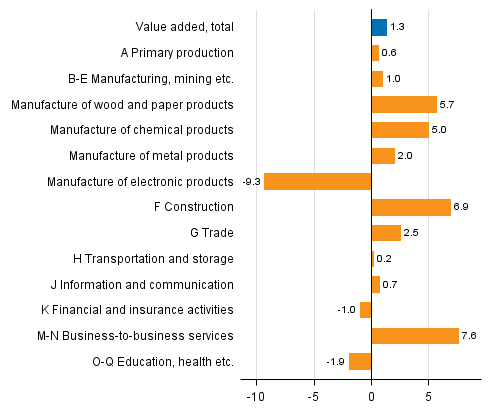
Figure 3. Changes in the volume of value added generated by industries in the fourth quarter of 2016 compared to one year ago, working-day adjusted, per cent
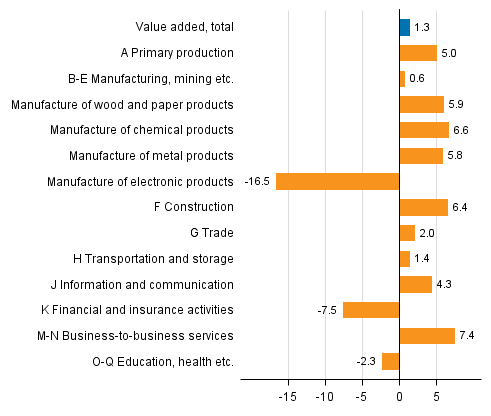
Figure 4. Changes in the volume of value added generated by industries in the fourth quarter of 2016 compared to the previous quarter, seasonally adjusted, per cent
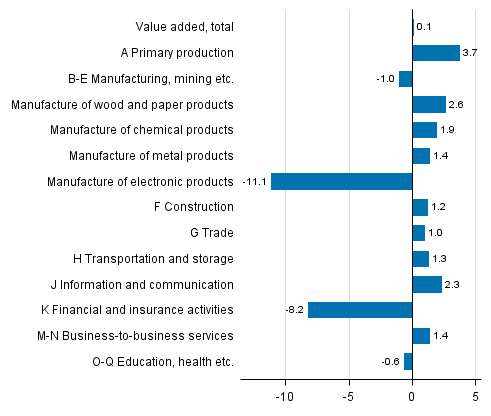
The volume of value added in primary production, that is, agriculture, forestry and fishery, went up by 3.7 per cent in October to December from the previous quarter.
Primary production grew by 0.6 per cent over the whole of 2016. Production in agriculture decreased by 3.7 per cent measured by volume but grew by 2.0 per cent viewed by current prices. The volume of the production of the forestry increased by 1.9 per cent.
In the fourth quarter, value added in total manufacturing (industries B to E) contracted by 1.0 per cent from the previous quarter but grew by 0.6 per cent from twelve months back.
Total output in manufacturing grew by 1.0 per cent over the whole year. Value added diminished by nearly ten per cent in the electrical and electronics industry. By contrast, output in other metal industry grew by 2.0 per cent. The forest industry went up by 5.7 per cent and the chemical industry by 5.0 per cent.
From October to December, the volume of value added in construction increased by 1.2 per cent from the previous quarter.
The volume of construction went up by 6.9 per cent in the whole of 2016. Building construction increased strongly, civil engineering also grew clearly.
From October to December, the volume of value added in service industries increased by 0.2 per cent.
The service industries as a whole grew in 2016 more weakly than other main industries, by 0.9 per cent. Private services grew by 1.8 per cent but public services decreased by 1.4 per cent. Growth was most significant in business activities (industries M to N), which grew by 7.6 per cent. Accommodation and restaurant activities and trade industries also grew clearly, and in particular, motor vehicle trade was lively. Value added decreased in public administration and education and in human health and social work activities, by 1.9 per cent.
Imports, exports, consumption and investments
In 2016, total demand in the national economy grew by 1.6 per cent from the previous year. Demand was particularly boosted by the increase in investments and the growth in households’ consumption expenditure.
Figure 5. Changes in the volume of main supply and demand items in 2016 compared to one year ago, per cent
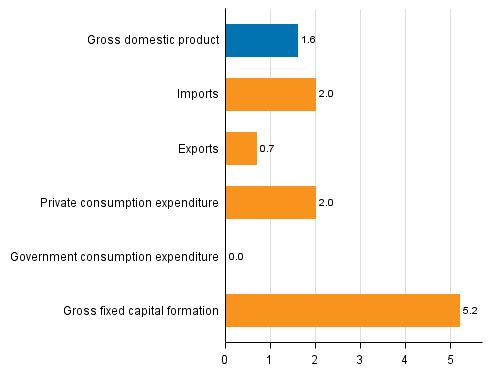
Figure 6. Changes in the volume of main supply and demand items in the fourth quarter of 2016 compared to one year ago, working-day adjusted, per cent
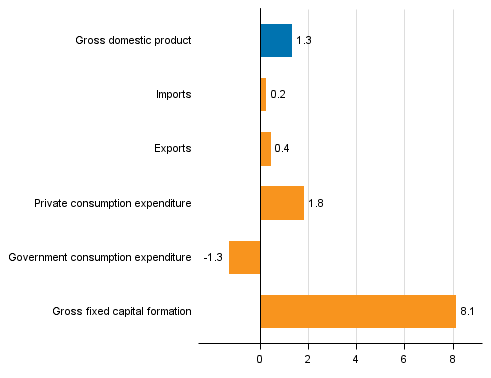
Figure 7. Changes in the volume of main supply and demand items in the fourth quarter of 2016 compared to the previous quarter, seasonally adjusted, per cent
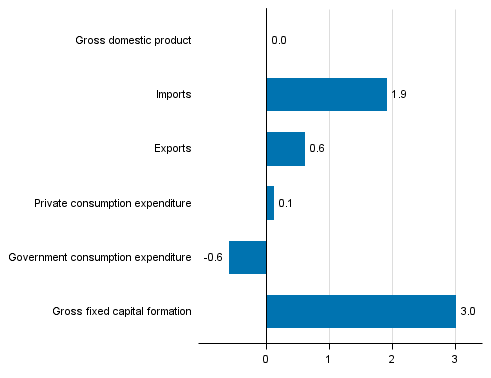
The volume of exports grew by 0.6 per cent and that of imports by 1.9 per cent in October to December from the previous quarter.
The volume of exports increased by 0.7 per cent over 2016. The volume of exports of goods grew by 0.9 per cent but as a result of falling prices, the current priced exports of goods decreased by 2.2 per cent. Exports of services remained roughly on level with the previous year. The volume of imports went up by 2.0 per cent. The volume of imports of goods grew by 2.7 per cent, but due to falling prices, current priced imports of goods remained at last year's level. Imports of services grew in volume by 0.6 per cent and at current prices by 0.4 per cent.
The volume of private consumption remained more or less on level with the previous quarter in the fourth quarter but grew by 1.8 per cent year-on-year. The volume of public consumption expenditure went down by 0.6 per cent from the previous quarter and by 1.3 per cent year-on-year.
Over the year 2016, the volume of private consumption expenditure grew by 2.0 per cent. The consumption of durable consumer goods grew particularly, partly due to lively motor vehicle trade. The volume of government consumption expenditure remained on level with the previous year in 2016.
From October to December, the volume of gross fixed capital formation, that is, investments increased by 3.0 per cent from the previous quarter. Construction investments and investments in machinery and equipment increased distinctly.
In 2016, investments increased by 5.2 per cent. The volume of construction investments was 8.2 per cent and the volume of investments in machinery and equipment was 5.7 per cent higher than in 2015. Investments in intellectual property products like research and development have declined already from 2011 onwards.
Employment, wages and salaries and national income
The number of employed persons did not change significantly in the fourth quarter: the number of employed persons was 0.1 per cent higher than in the previous quarter. The number of hours worked in the national economy decreased by 1.2 per cent from the previous quarter.
In the whole of 2016, the number of employed persons grew by 0.6 per cent and the number of hours worked by 1.0 per cent from the year before. According to Statistics Finland's Labour Force Survey, the unemployment rate was 8.0 per cent in October to December and 8.8 per cent in the whole year, having been 8.7 per cent in October to December 2015.
Labour productivity, or the volume of gross value added per hour worked, grew by 0.2 per cent last year.
The nominal wages and salaries bill of the national economy grew by 1.6 per cent and social contributions paid by employers by 2.5 per cent year-on-year.
The operating surplus (net), which in business bookkeeping corresponds roughly with operating profit, grew by 3.9 per cent from 2015. Gross national income was 1.6 per cent higher in nominal terms than in the previous year.
The available data
The preliminary data are based on the source information on economic development available on 22 February 2017. The annual level data for 1990 to 2015 correspond with the National Accounts data released on 31 January 2017, except for those on the rest of the world sector (imports, exports, primary income from/to the rest of the world), which may have become revised.
The preliminary data for 2016 that contain more detailed data on general government and other sector accounts will be released on 16 March 2017. The data of this release will be revised at that time. The revised data will also be updated in the database tables of the Quarterly National Accounts but no actual release of the Quarterly National Accounts will be compiled.
National Accounts for 2016 with more detailed data contents will be released on 13 July 2017.
Data concerning the first quarter of 2017 will be released on 1 June 2017, when the data for previous quarters will also be revised. A flash estimate on GDP development for January to March will be released in connection with the Trend Indicator of Output on 16 May 2017.
Due to the benchmarking and seasonal adjustment methods, quarterly data in the entire time series may become slightly revised in connection with each release. However, the largest revisions take place during the two to three years following the release on a quarter, because final annual accounts data are published at a lag of around two years from the end of the statistical reference year. Seasonally adjusted and trend time series always become revised against new observations irrespective of whether the original time series becomes revised or not.
The quality description can be accessed at (in Finnish): http://www.tilastokeskus.fi/til/ntp/laa.html .
Methodological description of Quarterly National Accounts.Source: National Accounts 2016, 4th quarter. Statistics Finland
Inquiries: Samu Hakala 029 551 3756, Veli-Pekka Karvinen 029 551 2667, kansantalous.suhdanteet@stat.fi
Director in charge: Ville Vertanen
Updated 1.3.2017
Official Statistics of Finland (OSF):
Quarterly national accounts [e-publication].
ISSN=1797-9765. 4th quarter 2016,
Gross domestic product grew by 1.6 per cent in 2016
. Helsinki: Statistics Finland [referred: 18.12.2025].
Access method: http://stat.fi/til/ntp/2016/04/ntp_2016_04_2017-03-01_kat_001_en.html

